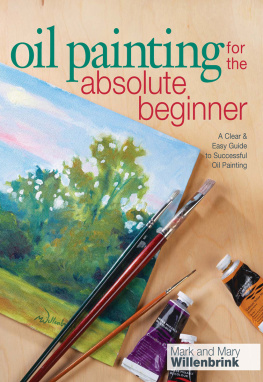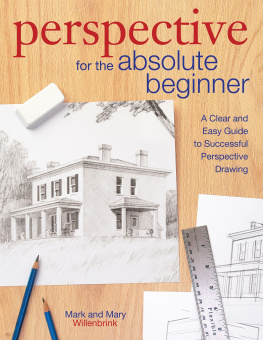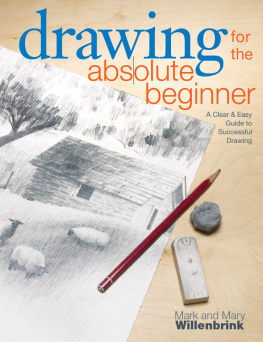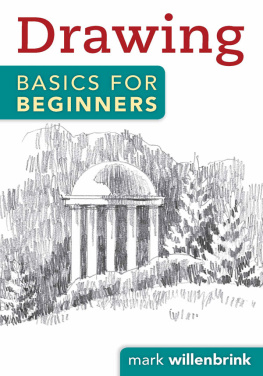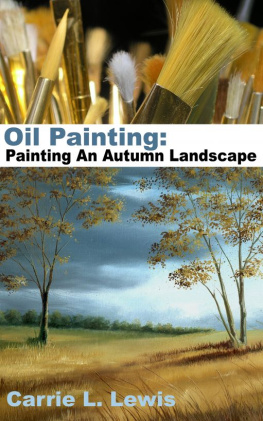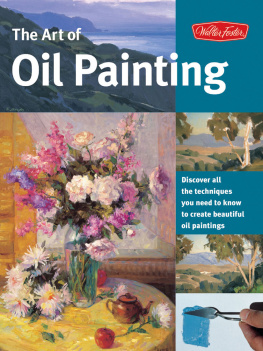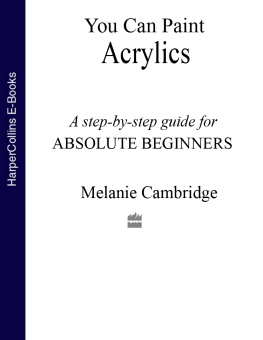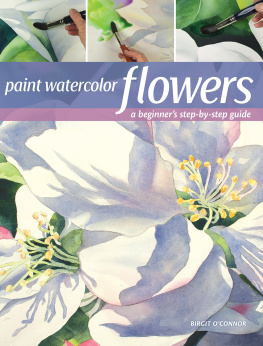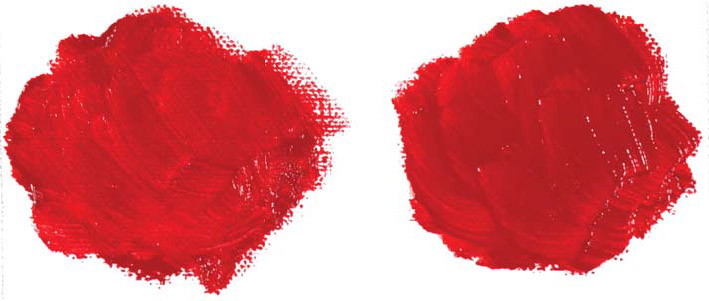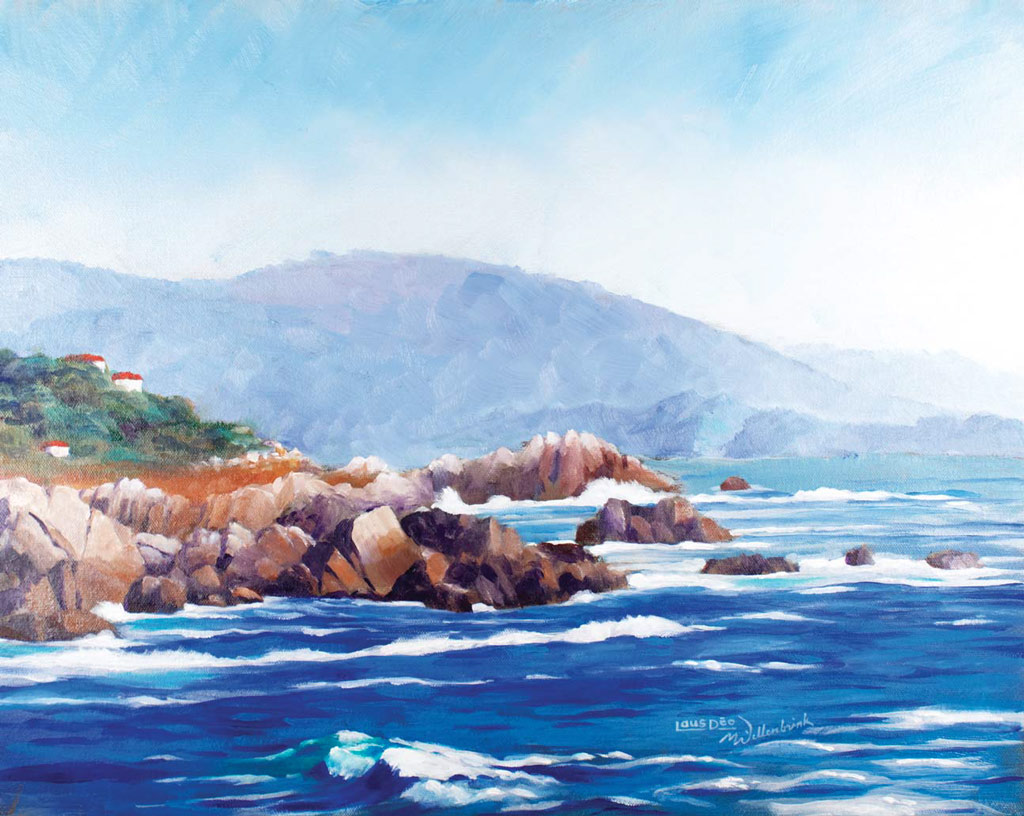
California Surf
oil on stretched canvas
16" 20" (41cm 51cm)
oil painting
for the absolute beginner
A Clear & Easy Guide to Successful Oil Painting
Mark and Mary
Willenbrink

NORTH LIGHT BOOKS
CINCINNATI, OHIO
www.artistsnetwork.com
Dedication
We dedicate this book to Clare Willenbrink and Grace Patton, our greatest encouragers.
Introduction
During an outdoor celebration our eldest daughter exclaimed, Ooh, look at the fireworks, to which our youngest child gleefully replied, Those aren't fireworks, they're dancing bananas! How fun! Their perceptions are unique, yet both are filled with wonder. Wouldn't you love to see their artistic expressions of fireworks?
Capture that feeling of curiosity and excitement as you work through this book, using the lessons as a tool to express yourself through your artwork. Then allow yourself to stand back from your paintings and say something like Ooh, I love the reflections in this pond or I really like the way I painted those trees. Don't be overly critical of your work. Note what you like about it, and always date the painting so that you can follow your progress.
First Things First
We suggest you go through the materials and take time to set up your own studio. Our definition of studio is a space that transports you away from the concept of time, responsibilities and worries. Each time you pick up this book, prepare yourself to be an active participant. Start reading it as if we were speaking to you directly. We hope that as you work through these demonstrations, you will cultivate your abilities while having fun in the process. Seriously, we want you to have fun!
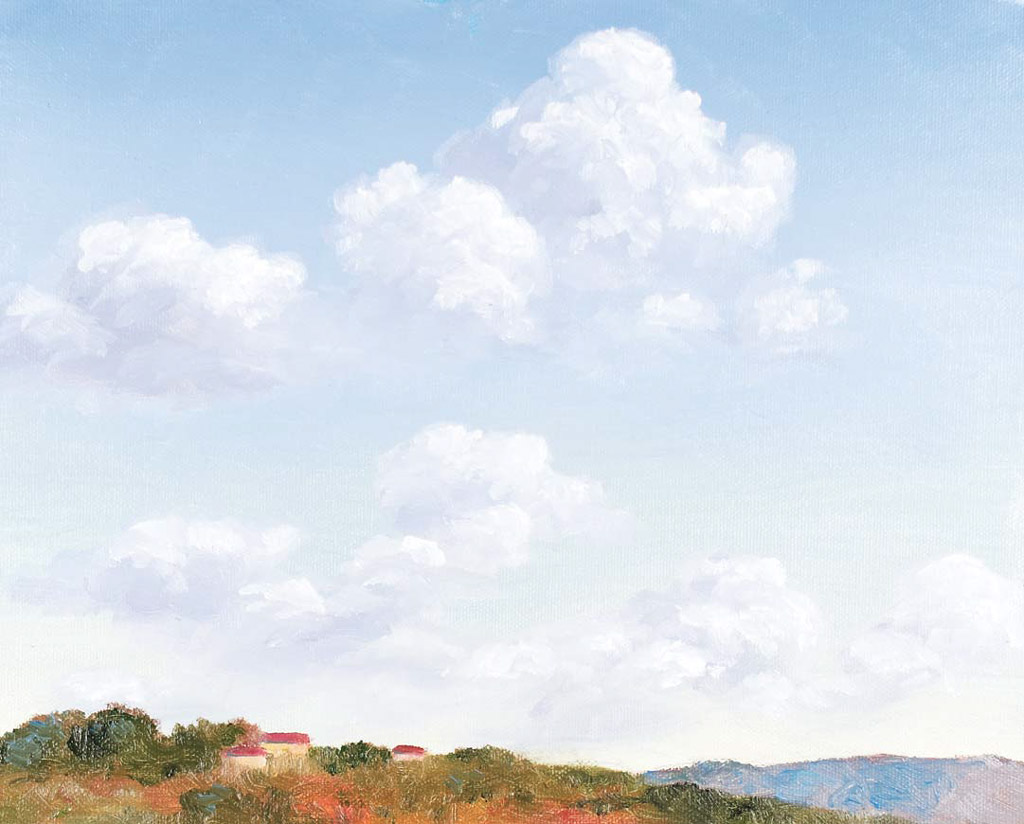
Clouds Over Tuscany
oil on canvas mounted on board
8" 10" (20cm 25cm)
Oil paintings have a timeless quality. They are durable and fun to work with. There's nothing like mixing the smooth, buttery consistency of the paints on your palette until you have just the right colors for your painting. Whatever the project, you need the right tools to accomplish your task. This chapter will explore the many painting supplies available and will help you find the right supplies for an enjoyable and successful painting experience.
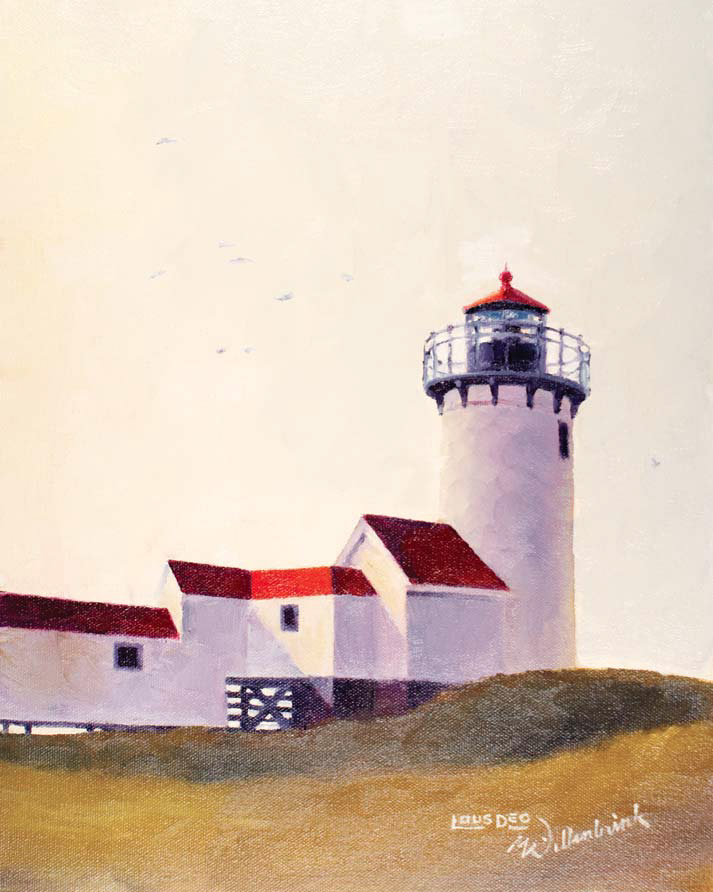
North Point Light
oil on stretched canvas
14" 11" (36cm 28cm)
Paints
A variety of oil paints is available on the market. The differences among them can affect performance, price and even your health.
Oil Paint 101
Oil paint is made from a combination of pigment (the color) and oil (the binder). Some paints have wax or filler additives. Years ago, pigments consisted mostly of natural substances. Now, most contemporary paints use synthetic pigments, which are cheaper to produce and have better lightfastness (resistance to fading). Linseed oil is commonly used as the binder, though other oils, such as safflower, sunflower, poppy or walnut oil, may be used. Some pigments, such as cadmium, may be toxic. Follow the manufacturer's guidelines and warnings.
Traditional vs. Water-Soluble Paints
Most traditional oil paints require turpentine or mineral spirits to thin the paints and clean the brushes. The smell of these solvents can be overpowering, and contact or inhalation are health hazards, even with the odorless types. There is also the issue of how to dispose of used solvents. What happens if you dump that stuff down a drain?
Water-soluble (water-mixable) oil paints are made of pigment and oil like traditional oil paints, but the oil has been chemically modified to allow the paints to dissolve in water instead of in smelly, toxic solvents. With the performance of water-soluble oils matching that of traditional oils, more people will be free to work with oils who were previously unable to because of health concerns.
Go Green!
Water-soluble paint brands include Max Grumbacher, Holbein Duo Aqua Oil, Winsor & Newton Artisan and Van Gogh H2Oil.
Grade
Oil paints are available in student grade or professional (also known as artist) grade. Student grade paints are less expensive, but professional paints contain more pigment and have more intense colors.
Lightfastness
You've probably seen an old poster that has faded so that only the blue and black colors remain. Reds and yellows are more prone to fading, especially if left in direct sunlight. Manufacturers often rate the degree of lightfastness, the resistance to fading, on the paint tube.
Tip
If you want a good palette but are price conscious, you might consider purchasing professional grade paints for the brighter colors and student grade paints for the neutral colors.
Professional or Student Grade
The professional grade Winsor & Newton Permanent Rose on the left is slightly brighter and more pure in color than the student grade Van Gogh H2Oil Quinacridone Rose on the right.
Weird But True!
All sorts of materials have been ground for use as pigments for paints, many of which have been replaced by synthetic pigments. Some of the more unusual substances include semiprecious stones, mummies and dried urine from cows fed on mango leaves.
Solvents and Thinners
Solvents and thinners are liquids used to thin and dissolve paint. Artists add them to the paints during the painting process to thin the paints and also to release the paint from the brushes and clean the palette.
Mediums
Mediums are liquids or gels that can be added to the paint to change its characteristics. Depending on the medium used, they can speed up or slow down the drying time, improve the flow, affect the consistency and increase the gloss and transparency of the paint.
For a quick study, a painting completed in a few hours, it may not be necessary to add medium to your paint as you work. For longer studies, during which the paint might begin to dry, add a slight amount of medium to the paint so that each layer has more oil (medium) than the previous layer. This technique is called fat over lean. The first layers of applied paint should dry sooner than the later layers of paint. This decreases the risk of cracking and flaking over time.

